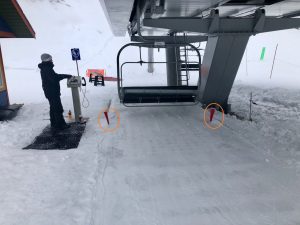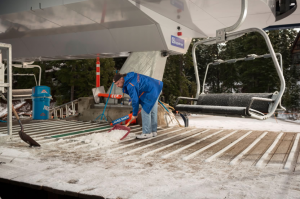Lifting Lift Ops Safety to New Heights
Lift operators have some of the most frequent interactions with guests at ski areas. Making sure that these workers are happy and safe at work will help to create a positive guest experience and shine a light on your resort.
As with many jobs, there can be a conflict between practices that improve safety (eg stopping or even slowing the lift to complete ramp maintenance) and guest experience (eg moving as many people up the hill as quickly as possible). It is important to find a balance between these two objectives. However, attentive employees can contribute to both a safer environment and great guest experiences.
Many ski areas have proactively developed strategies to successfully reduce injury rates in this group.
 Being hit by the carrier is one of the most common injuries while working as a lift operator. This can be caused by a lack of attention and awareness of a safe distance between your body and the chair. Mount Washington developed a Spatial Awareness Training tool. All operators are required to complete the training and sign off. The tool reviews the safety protocols for working in the terminal area as well as in the head trap. Since introducing this component in their lift operator training, Mount Washington has experienced a noticeable reduction in lift operator’s being struck.
Being hit by the carrier is one of the most common injuries while working as a lift operator. This can be caused by a lack of attention and awareness of a safe distance between your body and the chair. Mount Washington developed a Spatial Awareness Training tool. All operators are required to complete the training and sign off. The tool reviews the safety protocols for working in the terminal area as well as in the head trap. Since introducing this component in their lift operator training, Mount Washington has experienced a noticeable reduction in lift operator’s being struck.
In addition to being struck by the carrier, injuries sometimes occur because of contact with a guest or their equipment. Lift operators should complete a visual check of every guest as they approach the loading zone to help identify people who are not in control of themselves or their equipment, or who are not positioned correctly. Awareness is critical for lift operator and guest safety. A distracted, fatigued, cold, hot, dehydrated or underfed operator can put themselves and others at risk.
 Guest mis-loads lead to employee interference and increased risk for lift operators. SilverStar Mountain identified that a common mis-load was due to mis-alignment of the guest at the loading point. The common ‘load here’ lines can be slippery and easily covered by snow, requiring regular clearing. SilverStar has installed “race brushes” at all chairlifts to highlight the load line and keep the guests standing side-by-side to the same width as the chair. The brushes have significantly reduced mis-loads.
Guest mis-loads lead to employee interference and increased risk for lift operators. SilverStar Mountain identified that a common mis-load was due to mis-alignment of the guest at the loading point. The common ‘load here’ lines can be slippery and easily covered by snow, requiring regular clearing. SilverStar has installed “race brushes” at all chairlifts to highlight the load line and keep the guests standing side-by-side to the same width as the chair. The brushes have significantly reduced mis-loads.
Other lift operations related injuries include repetitive strain from bumping or holding back carriers, loading equipment (gondolas), strains from assisting guests to load, lifting fallen guests, or from shoveling snow. Making sure that adequate training has taken place, including a real-time mentoring coaching program, is very effective in establishing good technique for novices.
Whitewater Ski Resort shared some successful practices about training:
- Train workers to face the direction of the approach of the chair when maintaining ramps so they are also visually reminded in their peripheral vision of the oncoming chair.
- Match the coach to the individual. Both large and small stature/strong and less muscular individuals can be very efficient but they will use different movement strategies to catch the lift.
- Whitewater has a variety of fixed lifts, therefore rotating workers between lifts can help to manage the degree of musculoskeletal strain. With the heaviest chair at Whitewater at 700 pounds unloaded, they make sure that no one works it on back-to-back days.
- When workers prefer to stay in one location, they are rotated between top, bottom and floater positions with a higher degree of frequency (every hour), which has the added advantage of keeping workers much more alert as well as hydrated and fed.
 Put yourself to the test: What’s wrong with this photo?
Put yourself to the test: What’s wrong with this photo?
WorkSafeBC staged this photo. Use the interactive tool to see how many hazards you can identify with this job site and employee actions.
Click Here to complete the challenge!
Each ski area will have unique factors to consider, however, training and maintaining strong awareness at all times, are two common ways to reduce lift operation injuries.
More resources related to ski lift operations:
- Safety Talk: Lift Operations – Sign into member’s only section to download (under Best Practices)
- Safety Talk: Using a snow shovel
- Safety Talk: Fit for Duty
- Safety Talk: Reducing ski & snowboard injuries
- CWSAA Minimum Lift Operations Procedures (contact CWSAA)
More Ski Area Safety Resources: go2hr.ca/skisafety

